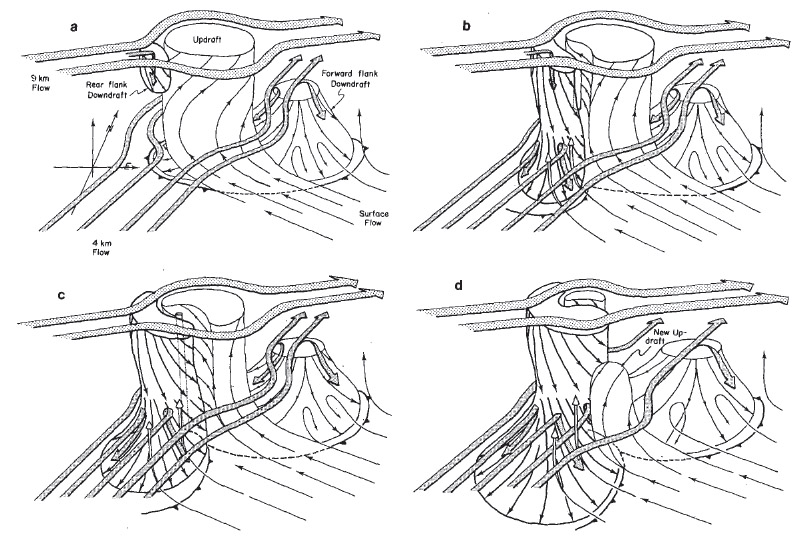Tornadoes are one of natures most fearsome creations. Yet, despite of an average of 1,200 tornadoes each year they are still relatively rare.
However, when they occur they constitute a major hazard around the United States. You can help to increase warning lead time by recognizing and reporting clues associated with tornado development and the various stages of the tornado life cycle.
We still do not fully understand how tornados form. Research continues to this day. What is becoming clear, however is there are many different circulations and wind movement within supercells.
We know the rotation of the parent cloud (the supercell) is not strong enough by itself to induce tornado formation. We also know now the rear flank downdraft is key to tornado formation.
Studies have shown that at the ground, typically, the clear slot, horseshoe-shaped feature from the RFD precedes the formation of a tornado (if one actually forms) by 5-10 minutes. Furthermore, the RFD actually begins a rotation at the ground implying tornados develop from the ground up.

For the RFD, it can be either "dry" or "wet". The unstable air in a dry RFD also warms as it descends further adding to its instability. This unstable warm air is quickly ingested into the main updraft causing the rotation to intensify.
The clear slot and horseshoe shaped region produced by the RFD are easier to identify with dry RFD's. Wet RFD's contain rain and hail to varying degrees. This precipitation inhibits much of the warming from the forceful descent of air.
While wet RFD's are unfavorable for tornado development they can still occur. They can greatly hinder your visibility if you are located to the south of the clear slot/horseshoe as any tornado that may form will likely be on the north side.
Do not drive through a wet RFD in order to get a more favorable vantage point. Wet RFD's can contain high wind, blinding rain and very large hail. Also, if there is a tornado, you will likely not see it until its too late.